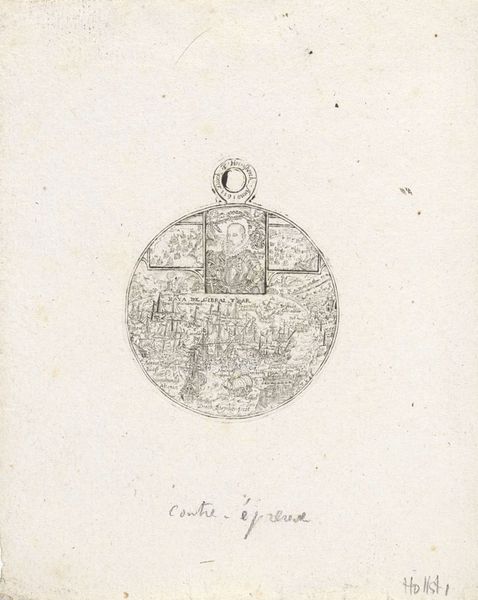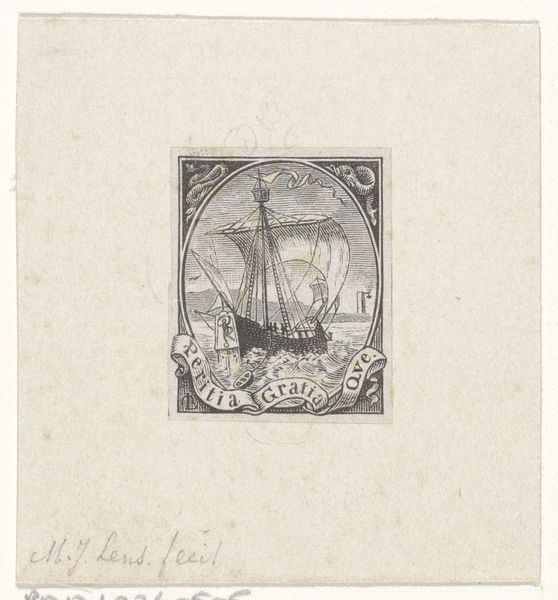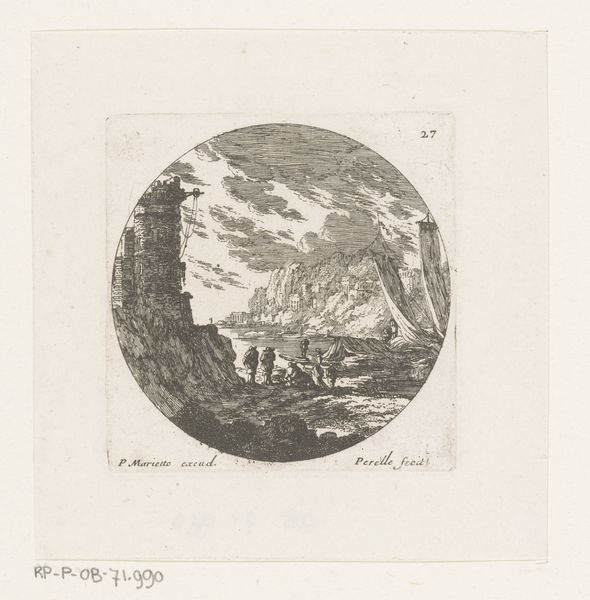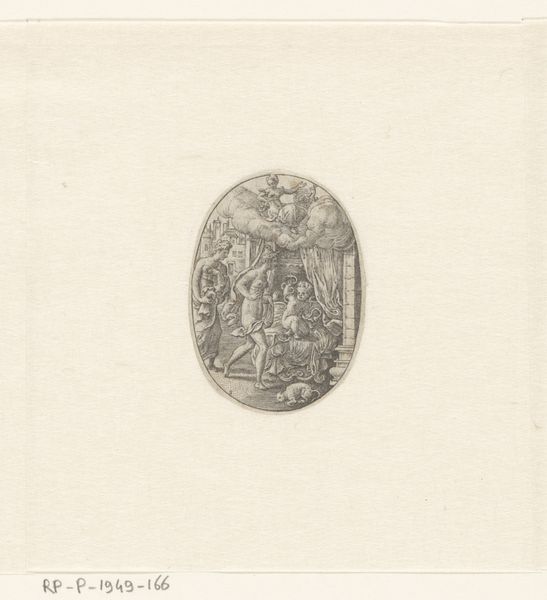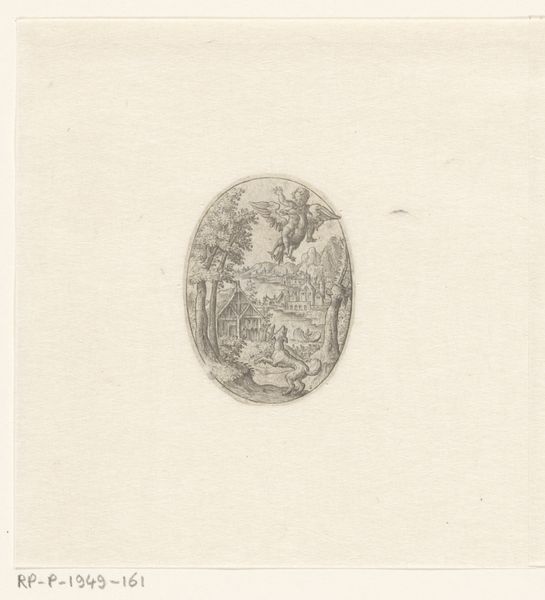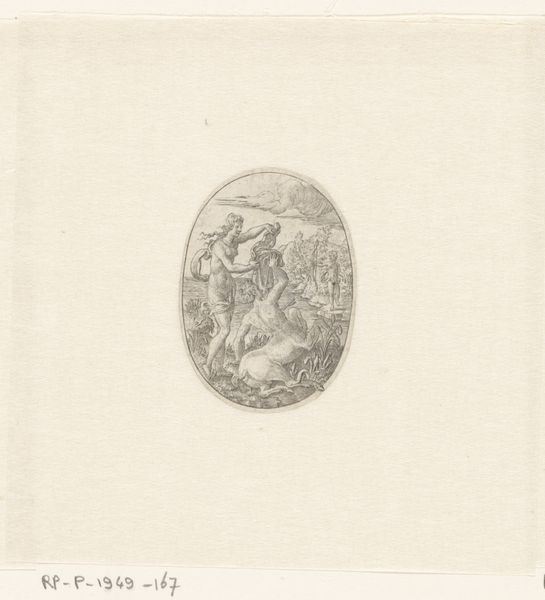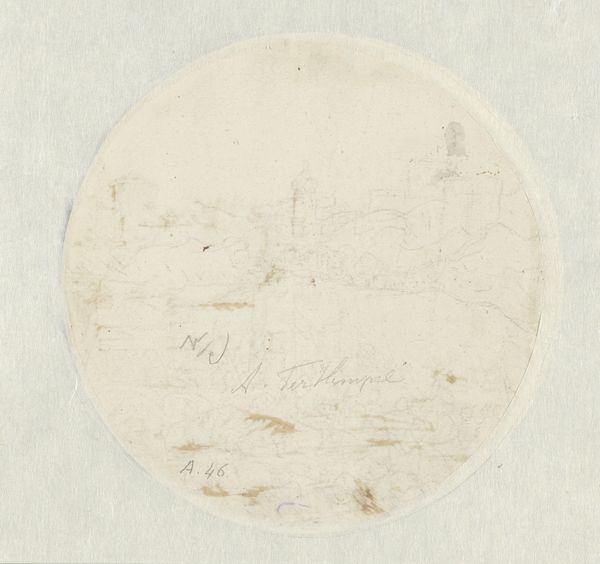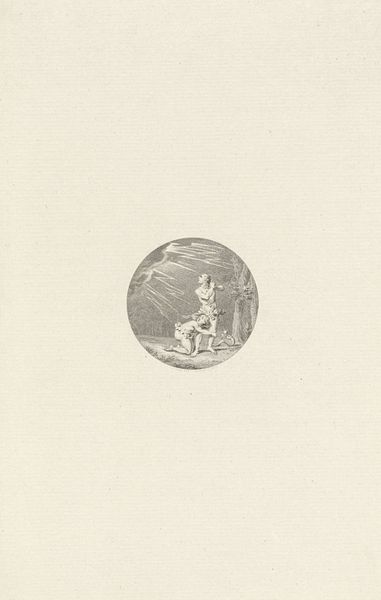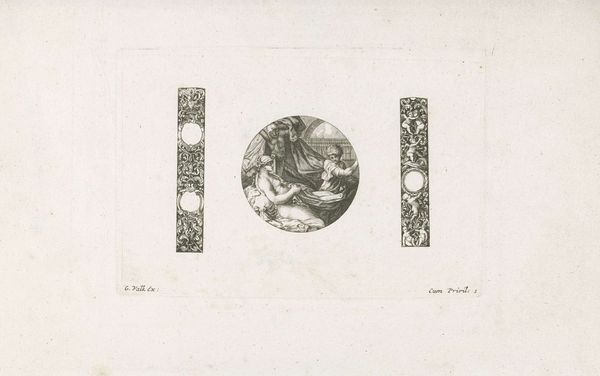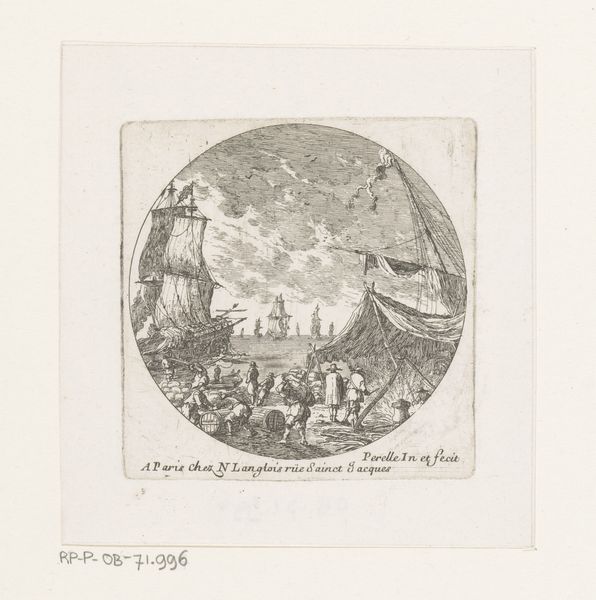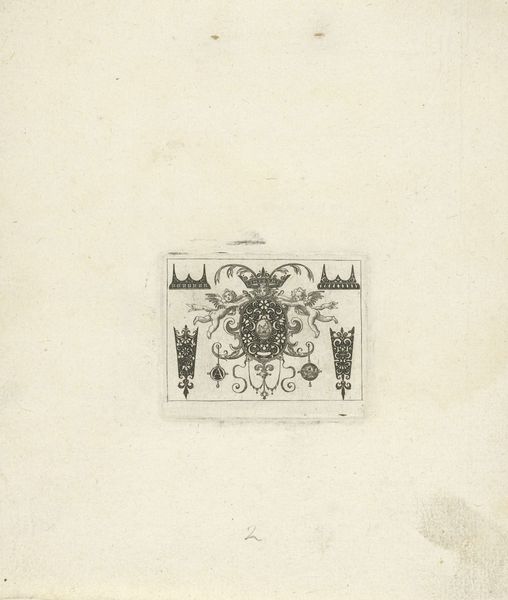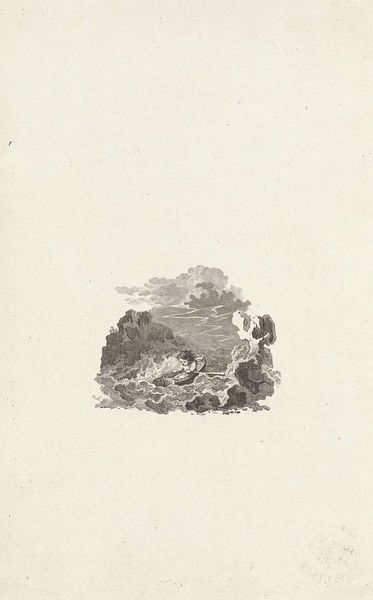
Afdruk van de achterzijde van een gegraveerde penning met de begrafenis van Jacob van Heemskerck 1611
0:00
0:00
drawing, print, ink, engraving
#
drawing
#
baroque
# print
#
landscape
#
ink
#
history-painting
#
engraving
#
miniature
Dimensions: height 59 mm, width 49 mm
Copyright: Rijks Museum: Open Domain
Curator: So, here we have a fascinating piece: "Afdruk van de achterzijde van een gegraveerde penning met de begrafenis van Jacob van Heemskerck," created around 1611 by Dirck Strijcker. It’s currently held here at the Rijksmuseum. Editor: Oh, my. It's intricate. I’m immediately struck by the feeling of solemnity, even in this tiny, delicate scene. It feels heavy with ceremony, somehow both grand and contained. Curator: Precisely! It depicts the funeral of Jacob van Heemskerck, a Dutch naval hero. What we're seeing is the impression of a commemorative coin, rendered in ink as a drawing. Notice the meticulous detail. The whole thing has this miniature quality. Editor: And there’s so much happening! I see a procession, figures in what look like mourning robes, and what I presume is the coffin being carried. The precision, to get all this detail in such a small space...it feels like a labor of reverence. Was Heemskerck an abolitionist? I see naval themes... Curator: A fascinating question, and worth further research, but Heemskerck lived before abolitionist ideas really took hold. As for its meaning, I see a desire to translate immense public grief into a tangible, personal object. These little details, these figures—they're not just decoration; they're a community coming together. The penning also allowed a wider populace access to national heroes through circulation, solidifying identity and pride through memory. Editor: Right, because not everyone had access to grand monuments or portraits, right? This democratizes grief and commemoration. It also speaks to a Dutch sensibility. A way of thinking about nationhood through these sea battles and naval heroism in those early days. Curator: Precisely. It is Dutch maritime history miniaturized into an intimate keepsake. What strikes me is the skill with which Dirck Strijcker translated the depth of such an important event onto something that could be held in your hand. Editor: A poignant snapshot then, shrunk to the size of a pocket mirror...or in this case a print, of a penning. Thanks for showing me this! Curator: My pleasure! It gives us all something to think about, to turn over and over in our minds.
Comments
No comments
Be the first to comment and join the conversation on the ultimate creative platform.
